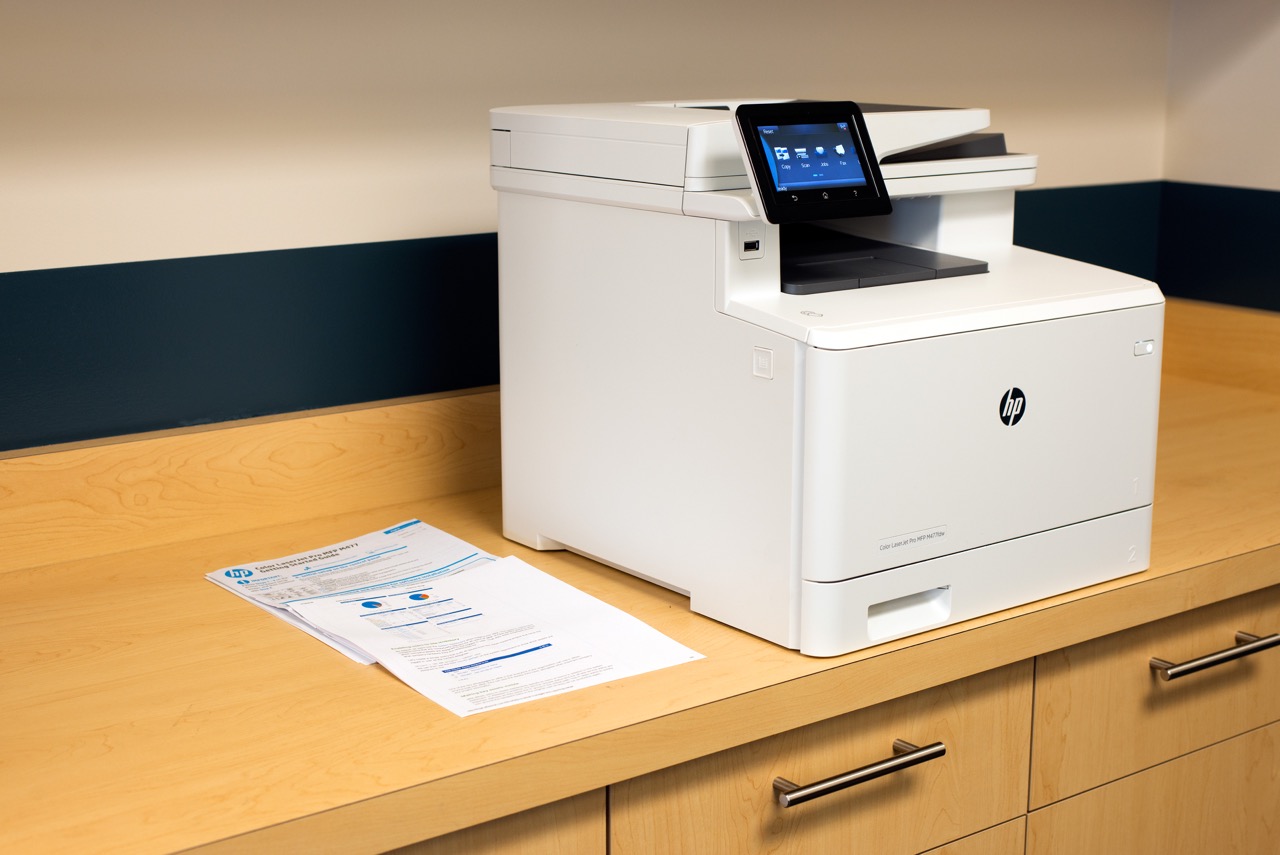

The thing is, once this important need was filled, besides improving the speed and reliability of both the printers and scanners—admittedly, necessary improvements—consumers wanted to know how else printers could facilitate the dozens of transitions each of us takes every day between our digital lives and our material lives. The instantaneous transfer from PDF to paper (and vice versa) was the printer’s first accomplishment, but not its last.
HP LaserJet printers, like the LaserJet Pro MFP M477, have improved this core function—up to 40 pages per minute, capable of printing thousands of sheets per month, access to the internet, and all the other specs a powerful printer should deliver on—but have also expanded on that role a printer plays as a catalyst between our two lives. Subject to the workings of moving parts, mechanical devices are expensive to improve, which is why the highest grade printers and other mechanical devices, like cameras, are out of the budget of smaller offices. In order to improve core functionality without driving up the price, HP looked to other fields, like chemistry and software engineering, to improve printer technology.

Because fewer of us are printing novel-length stacks of documents anymore—instead, just a few pages at a time—HP printers are designed to print the first page of a document the fastest, and so on. They also print double-sided as quickly as their competitors print single-sided, so most of us will find our documents ready by the time we even walk over to that part of the office. The printer is one of those devices that works best the less you notice it. When it’s doing its job correctly, you don’t have to fiddle with menus, or puzzle out how to replace toner, or fix constant jams. Our physical and digital lives are not really two distinct things—they’re one and the same. So, the devices that serve as the link between them should be as simple and profound as walking out the door.